Late last summer we were here, enjoying the Paw-Paw trees and the Red lobelia when we came across the remains of a Bluebell on the forest floor. It was just a limp, yellowed piece of hay in the shape of a bluebell, and we looked closer at the forest floor, and started to see many more. It dawned on us that this was one of those special Bluebell places! We must plan to come back here in the spring. At the time the air was thick with the scent of very ripe Paw-Paw fruits and we were very much in the mood of the late summer and that was that. Â But as this past winter carried on and on, this place remained in our Springtime dreams, and we finally set out to visit. Â In the last post we mentioned our sighting of a white Bluebell, and here it is:
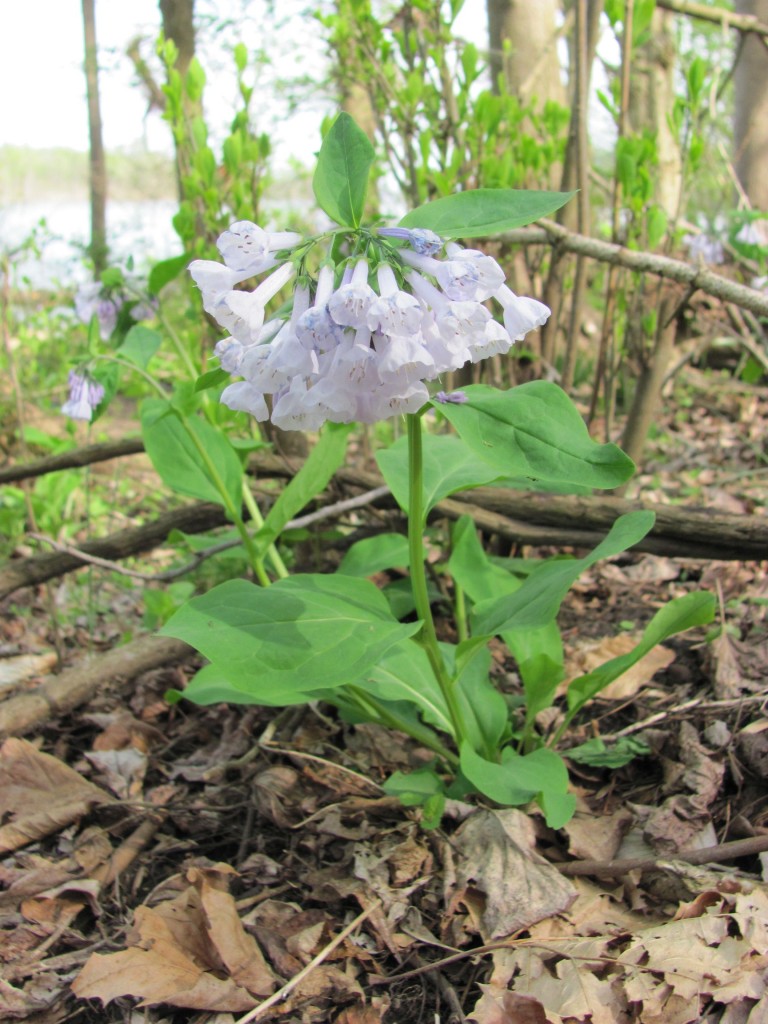
We will end this post with some amazing pink Bluebells.
It is a worthwhile exercise to focus on just one plant and learn it characteristics and its variability. As we have with Bloodroot, we are exploring the world of the Bluebell and finding more insights into the workings of genetics and ecology of this species. Growing them in a garden setting is a great way to have a hands-on experience with plants, which complements our observations of nature.
Here a patch of Squirrel Corn (Dicentra canadensis) underneath a Spicebush. The invasive Japanese Honeysuckle vine on the right threatens the scene.
A pleasing and common sight in the rich ravines in this part of the world is the Trillium Erectum Var. Album x Flexipes, this a unique Trillium to this area, and of course there are many variations of this to be found on the hillsides up and down the Lower Susquehanna River.
This is a really fun place to come and explore the sometimes subtle botanical qualities of this exceptionally beautiful native Springtime woodland herbaceous plant.
We are growing a nursery propagated version of this specific variety in our garden, and we are on year two of flowering!
Above, Mayapples with Squirrel Corn. The fresh green leaves of Spring are so elegant and precious. This time of Spring is really the best time to take the time to view this amazing transformation. Â Spring happens quickly for each species, and it is hard to predict when exactly which plant will be at its peak bloom, and if even the weather will cooperate!
Trillium Cernuum
Sometimes the most inviting paths are the most difficult to find.
Below is the Trillium flexipes.
This Trillium was found deep in the Forest, where the trail was mostly overgrown with trilliums, Phlox and Bluebells, and we had to watch our step and at some point we had to turn around, so to not step on any plants, even as the trail blazes continued on painted on the trees ahead.  This Trillium exhibits the characteristics of three species, the cernuum, flexipes and the erectum!  Please comment if you have an observation about this unique specimen!
We arrived at the top of the Ravine to see a beautiful view of The Susquehanna, and saw more of the Pink Bluebells.
This hollow log created a most pleasant setting for this vista of bluebells.
This was the most magnificent Spring Wildflower Vacation!



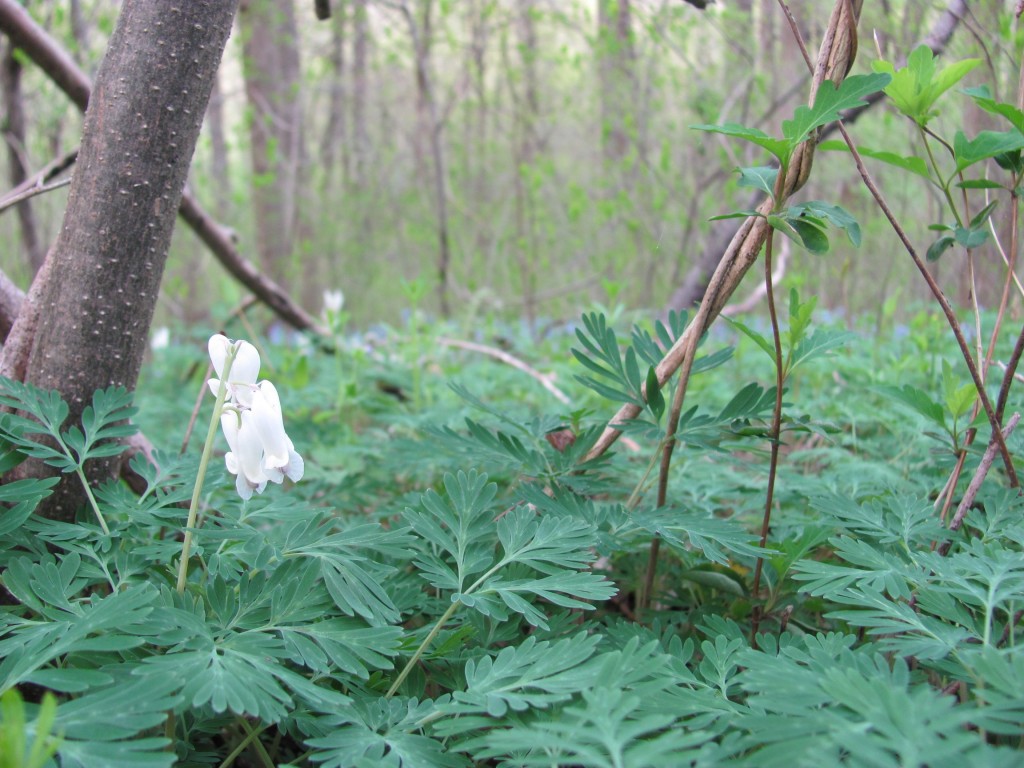
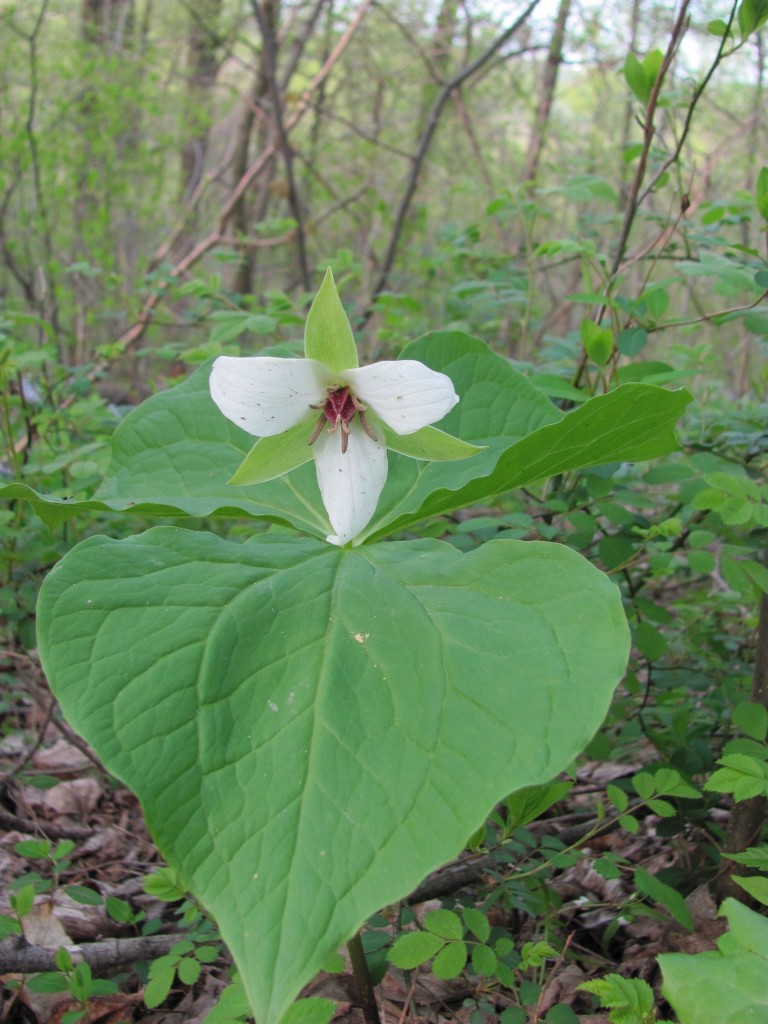
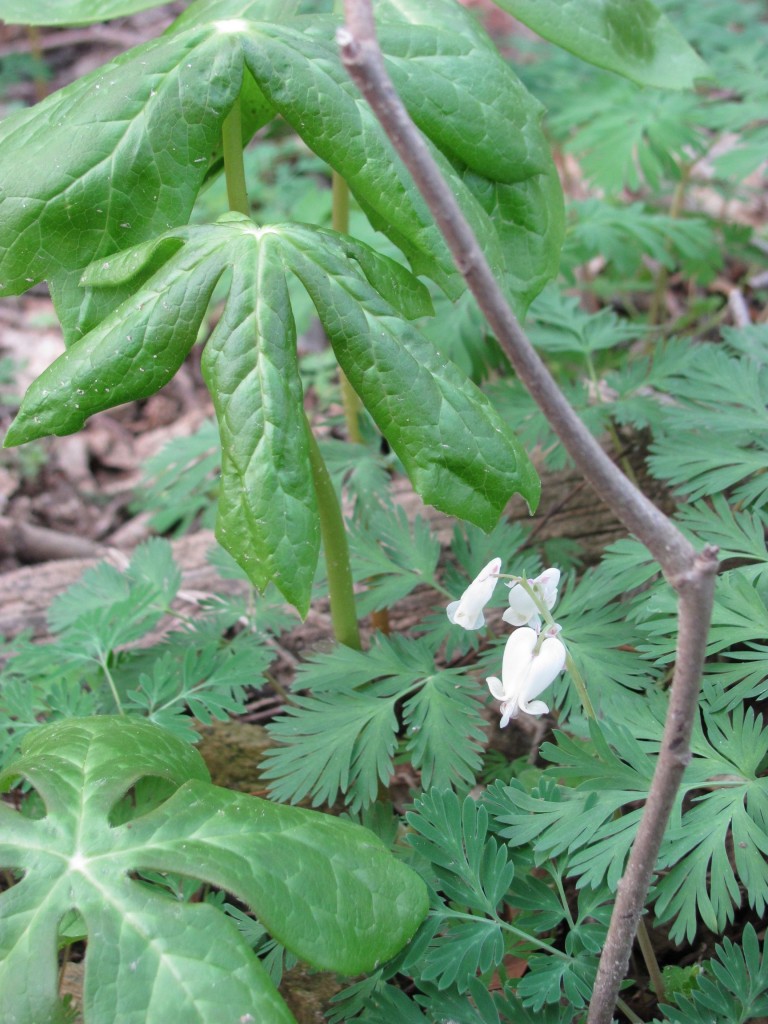
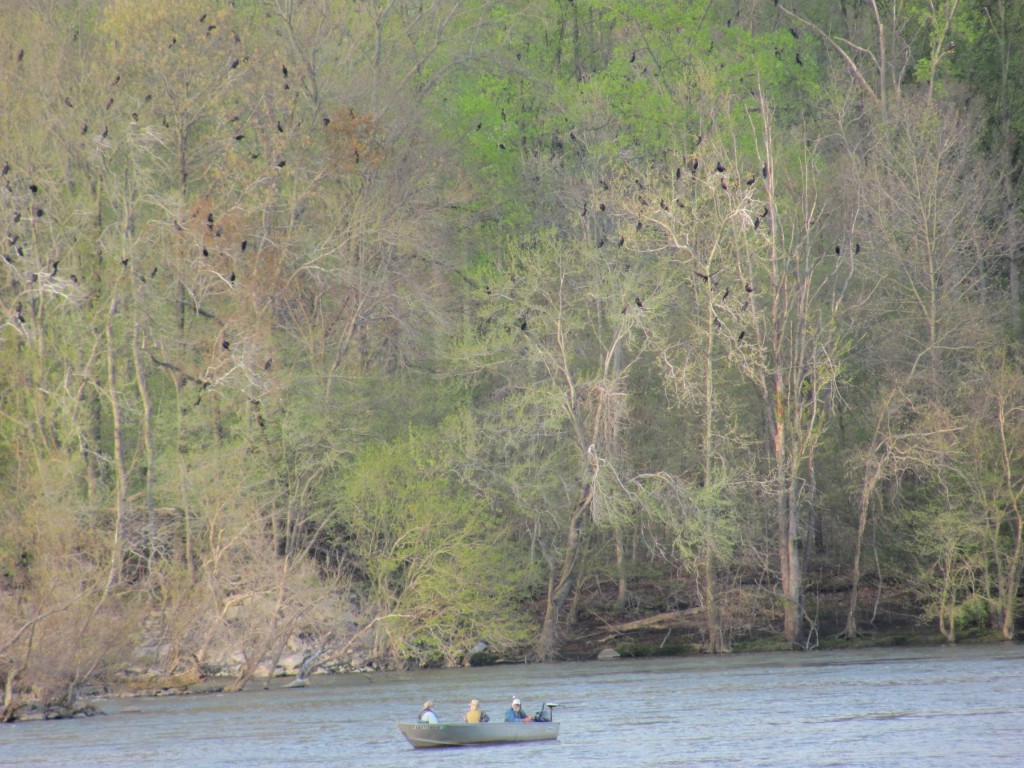
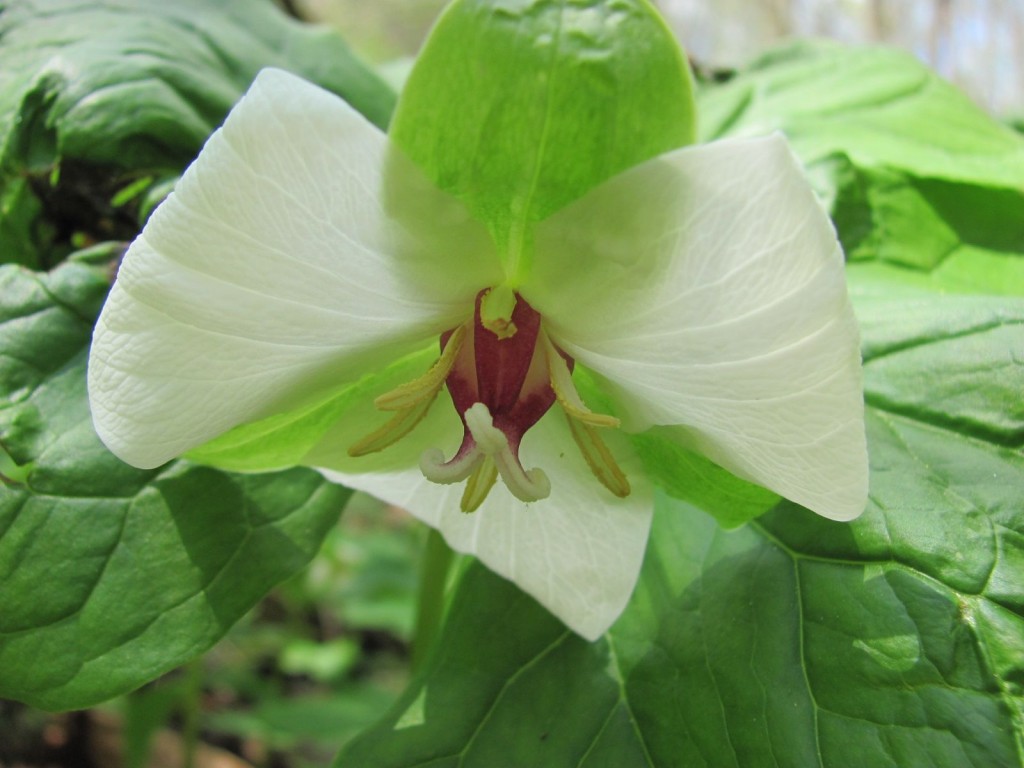
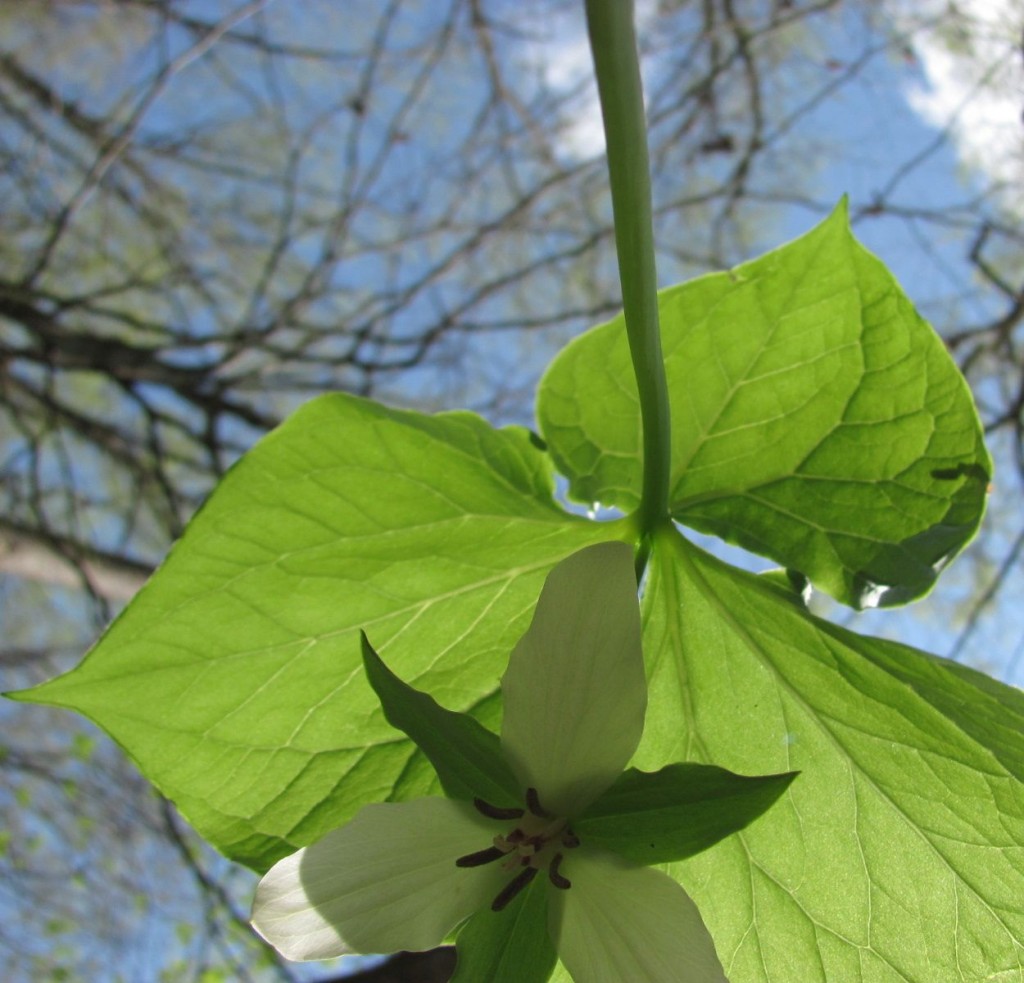
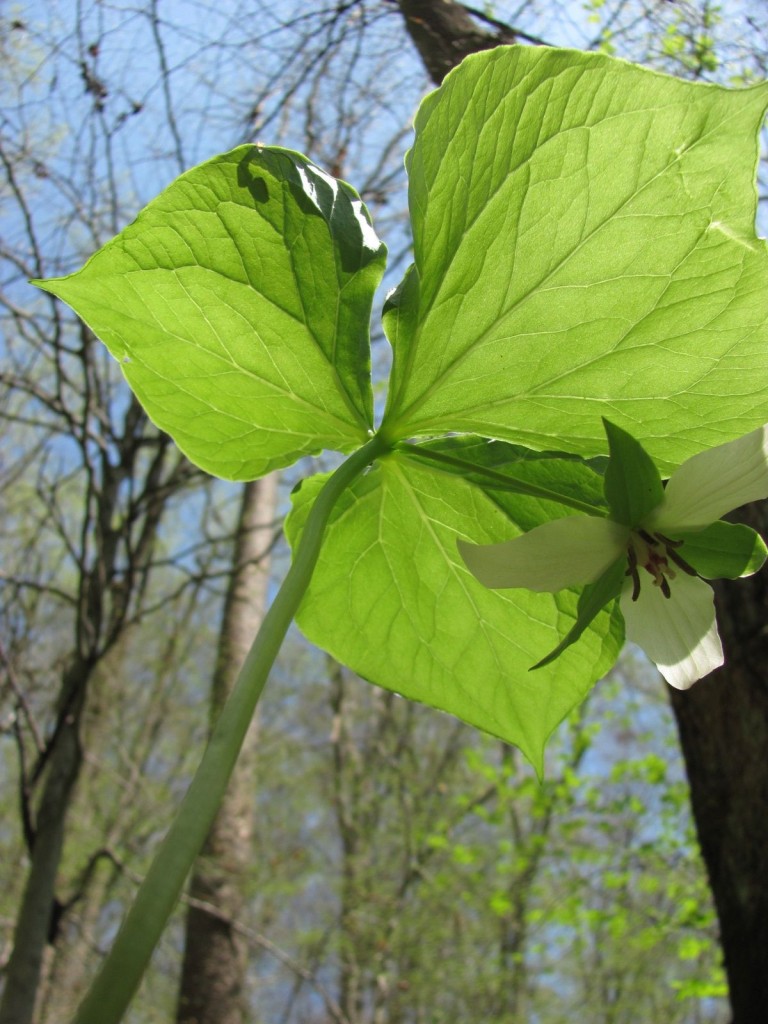
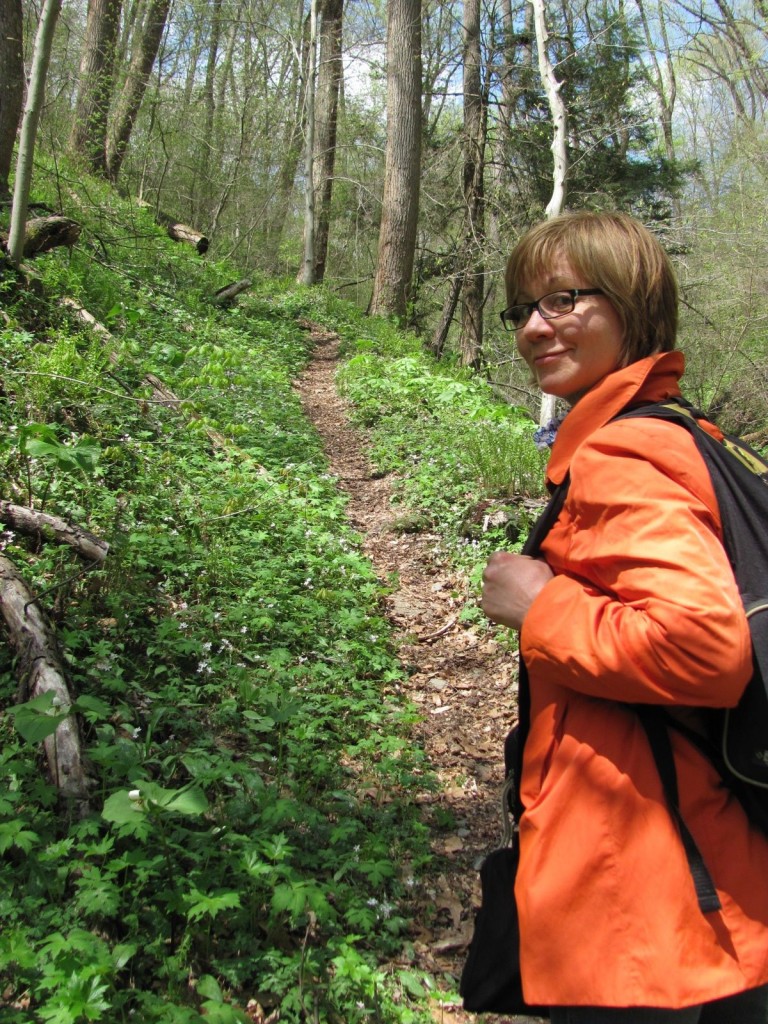
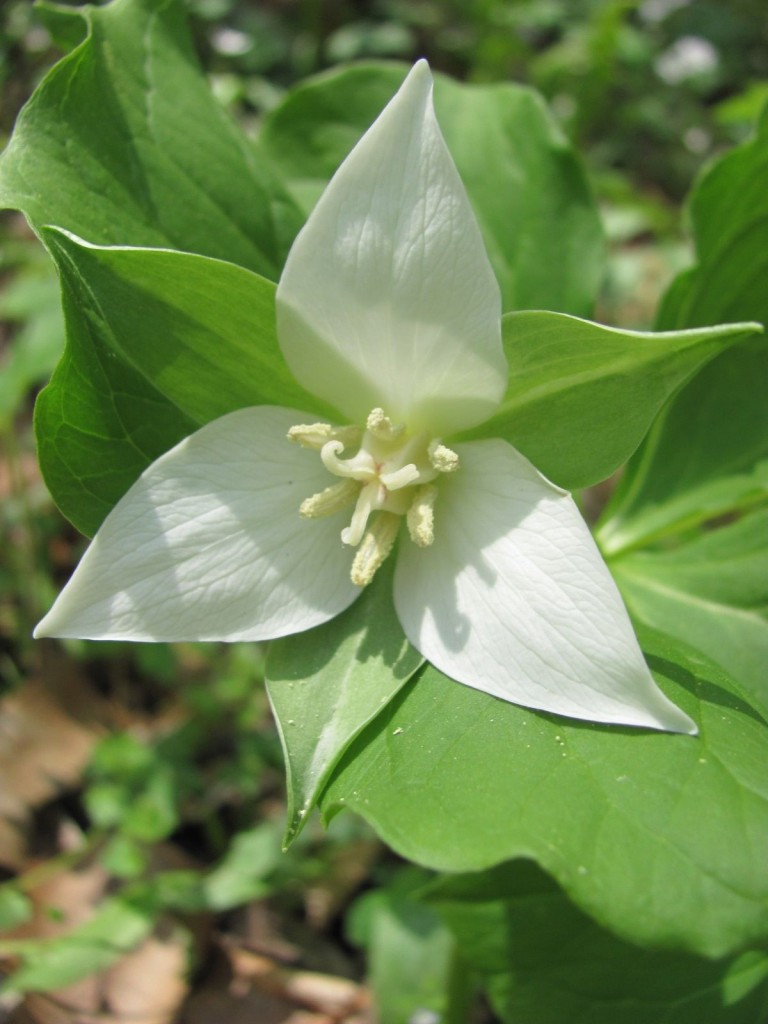
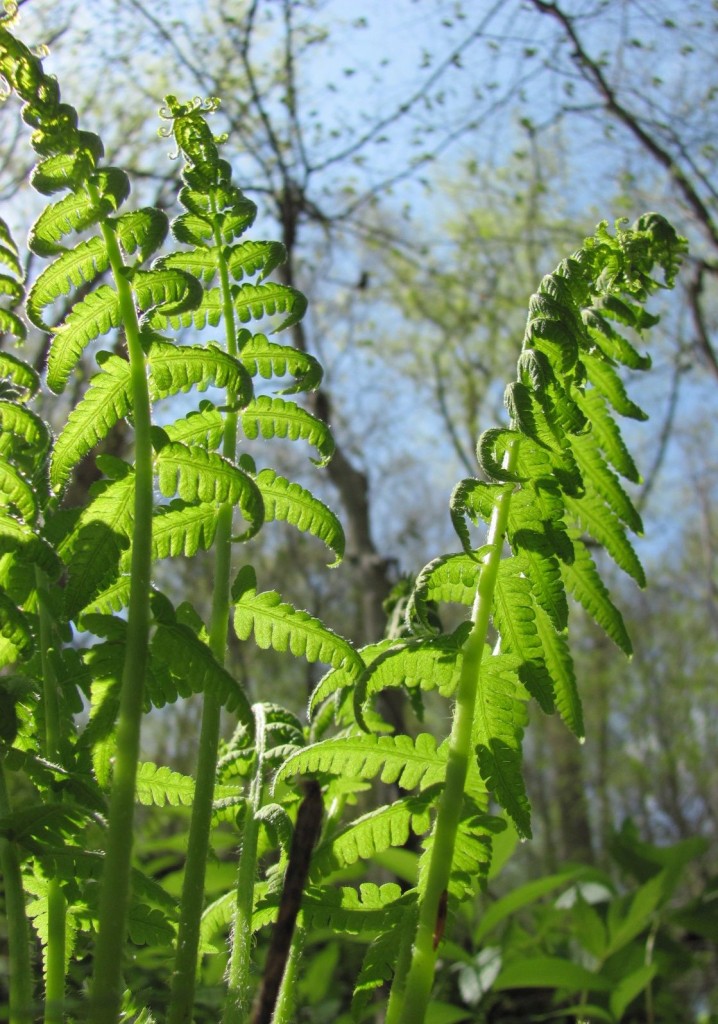
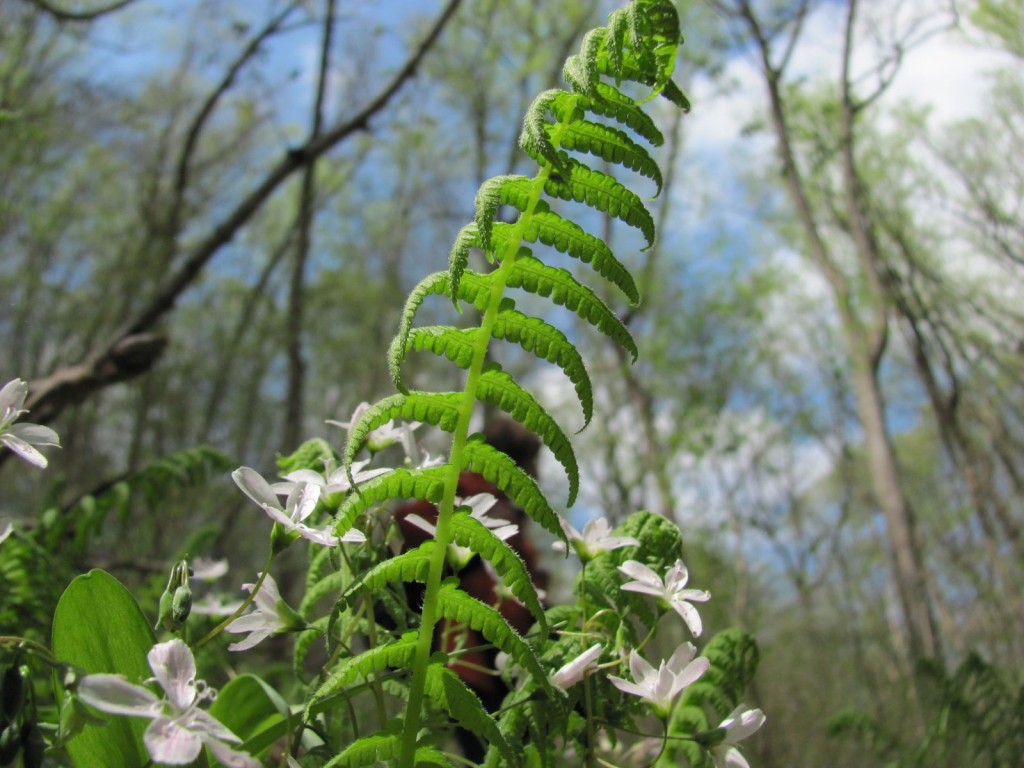
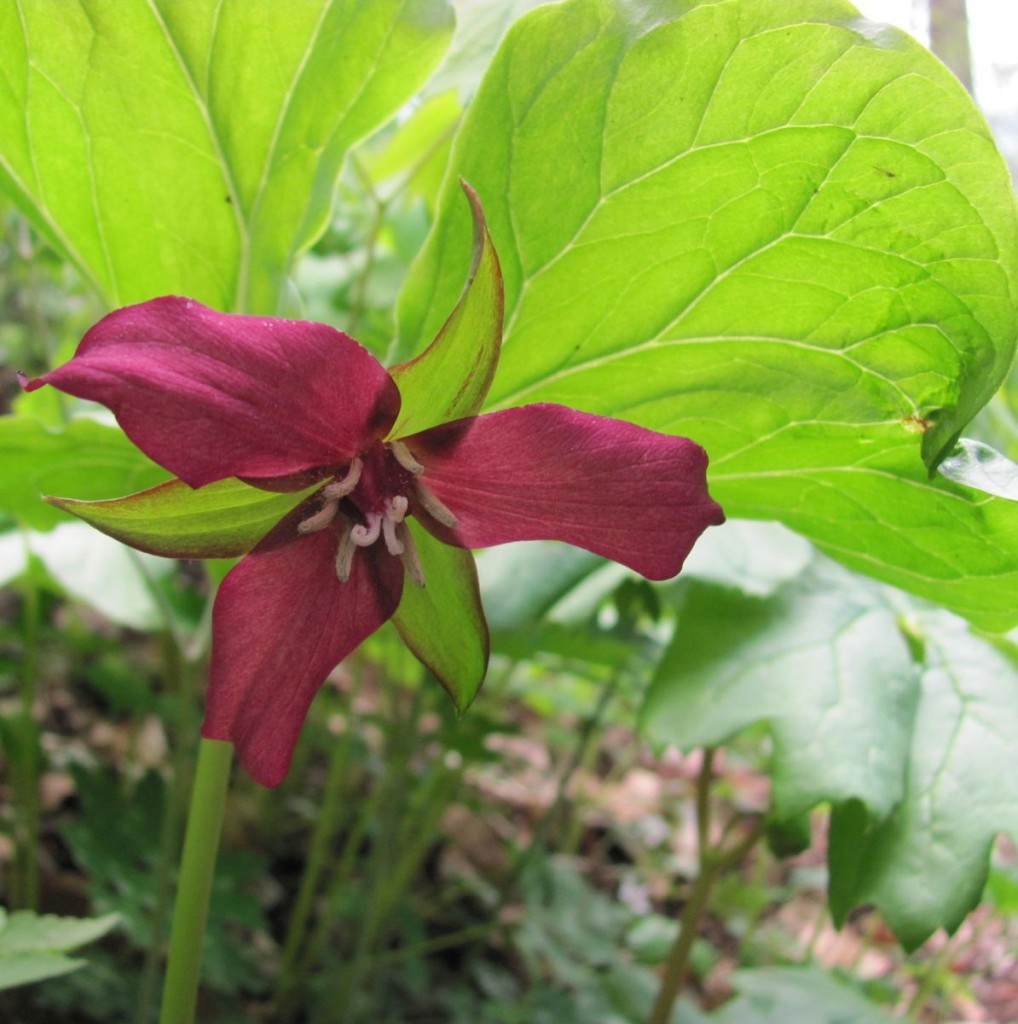
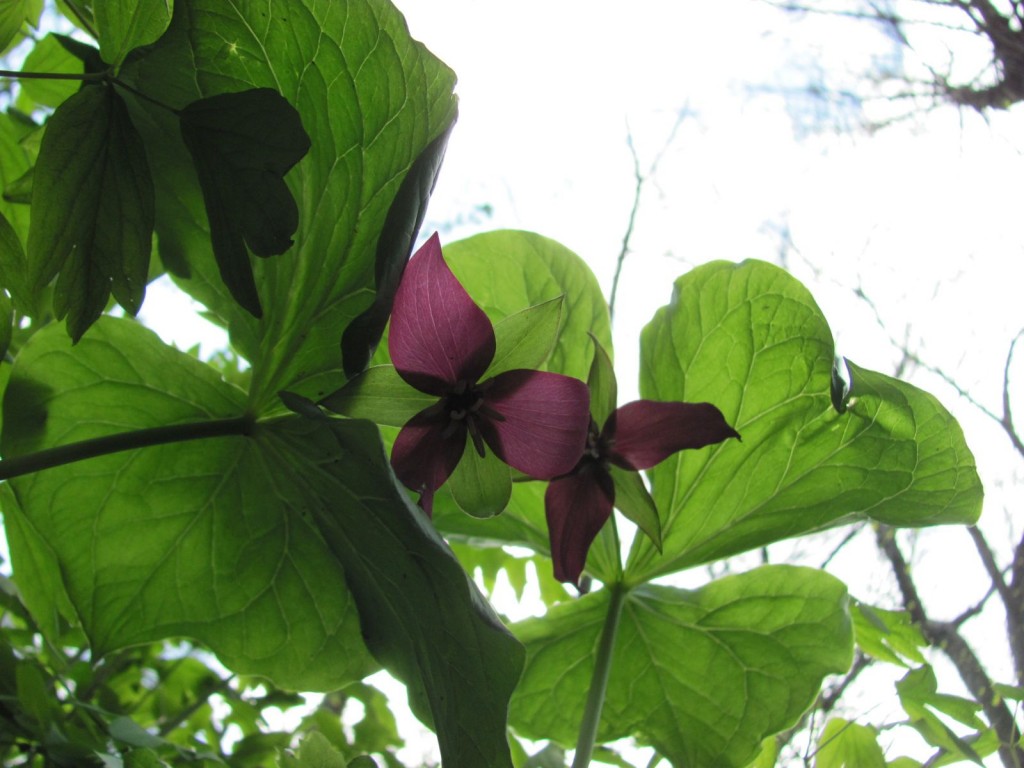
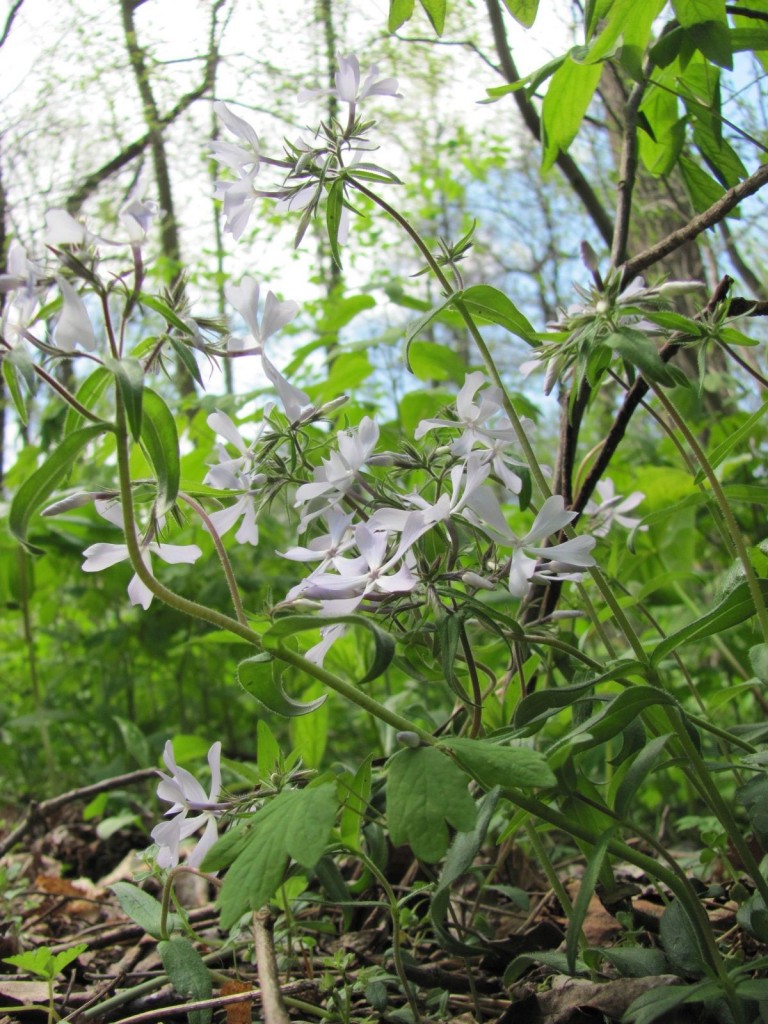
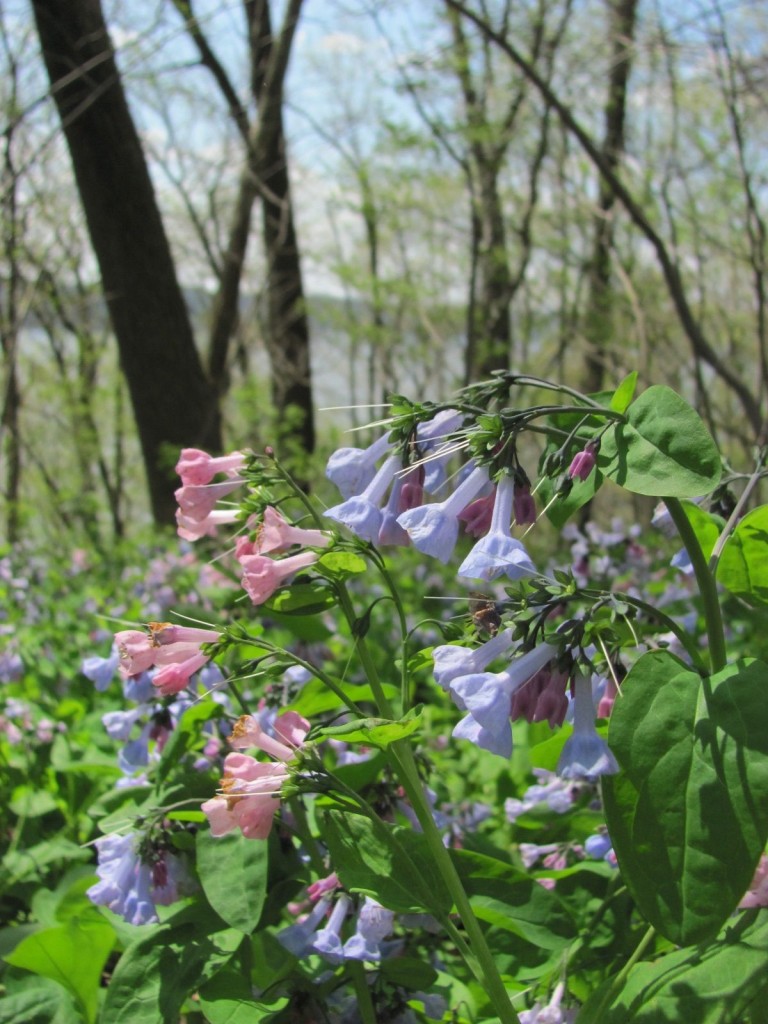
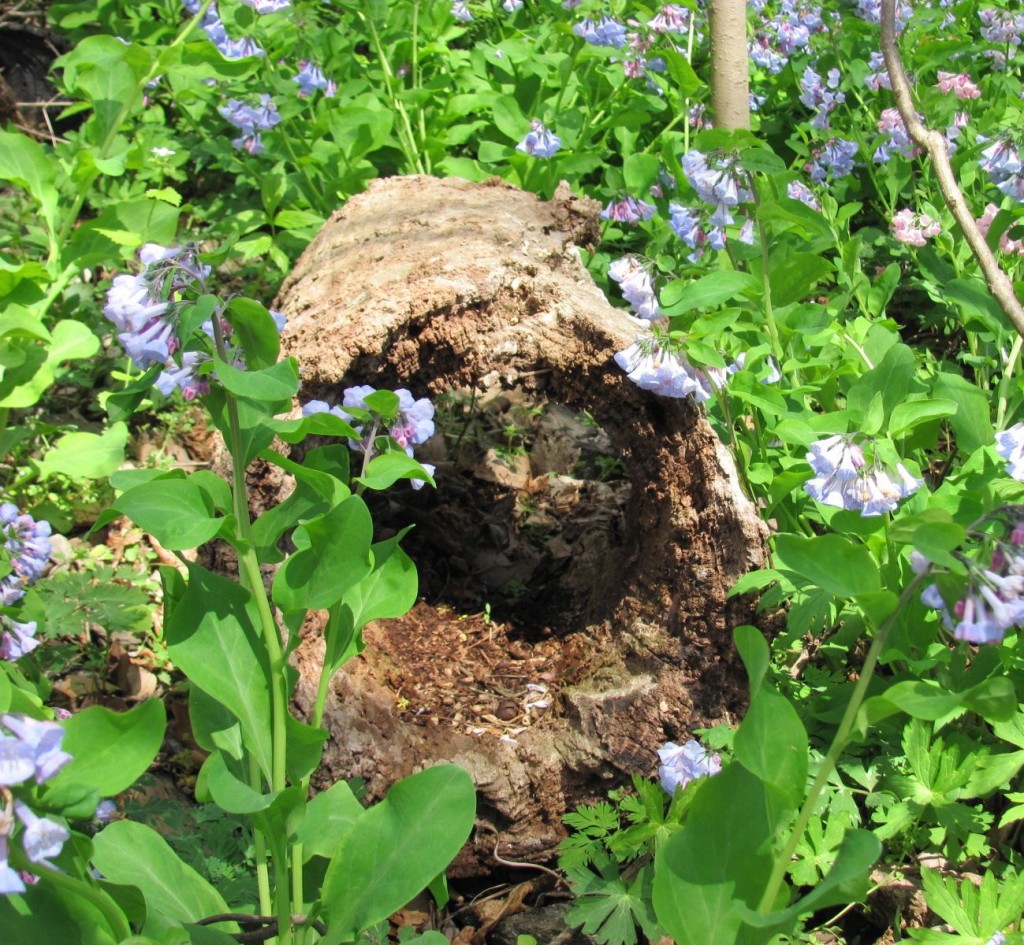
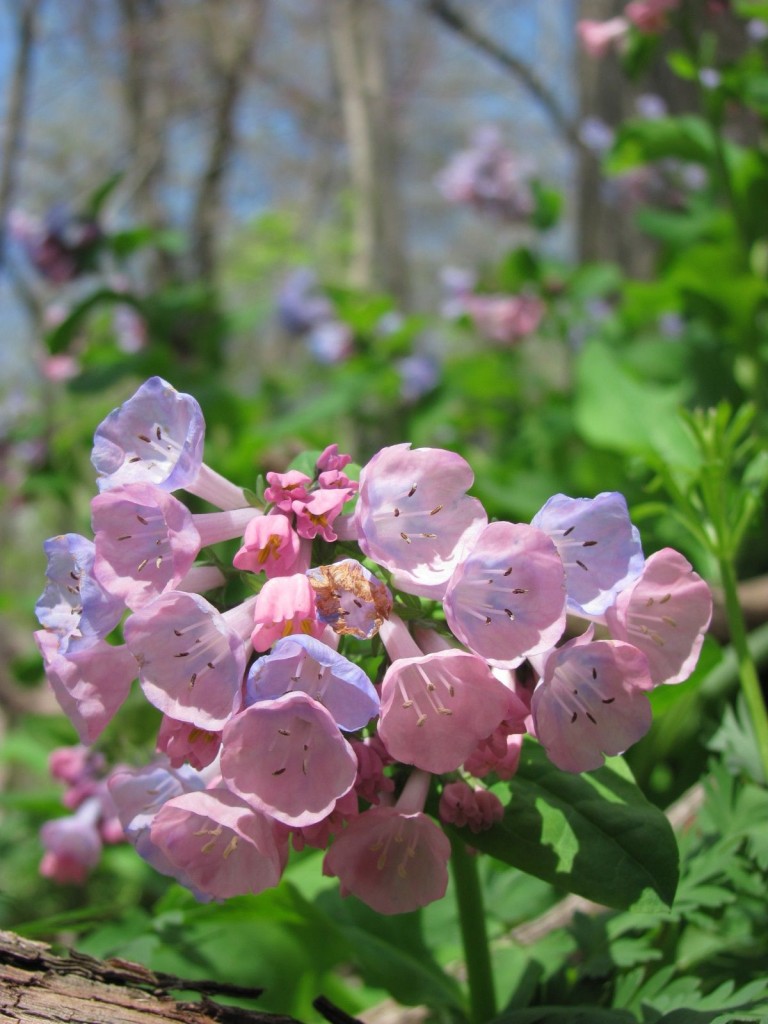
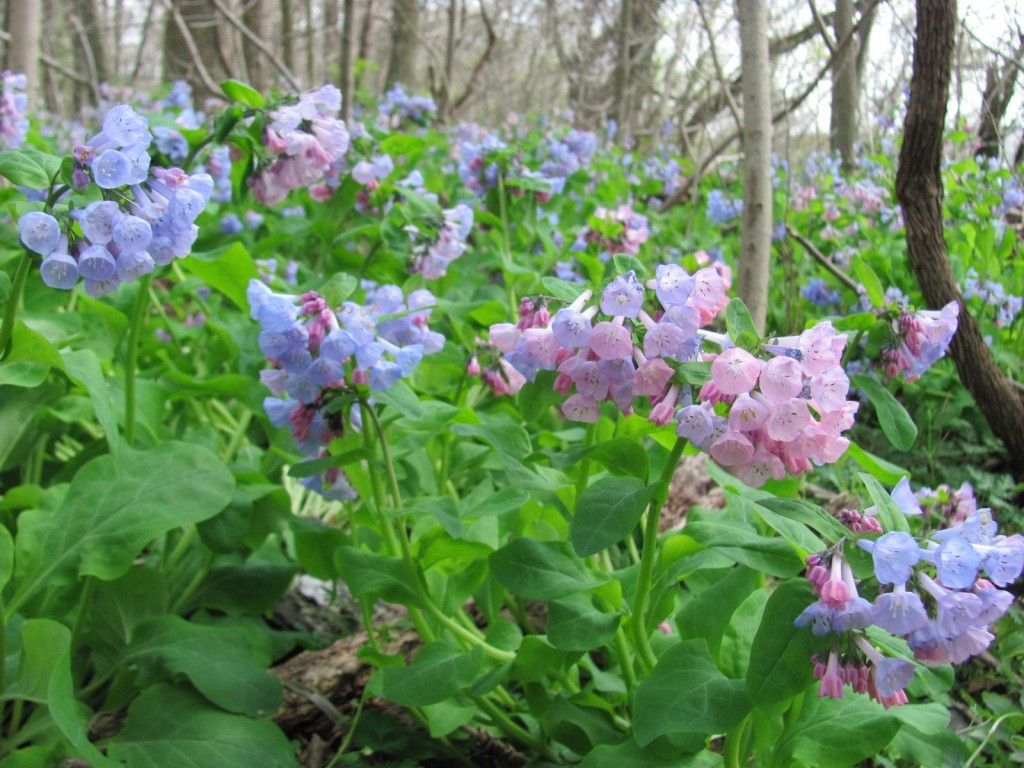
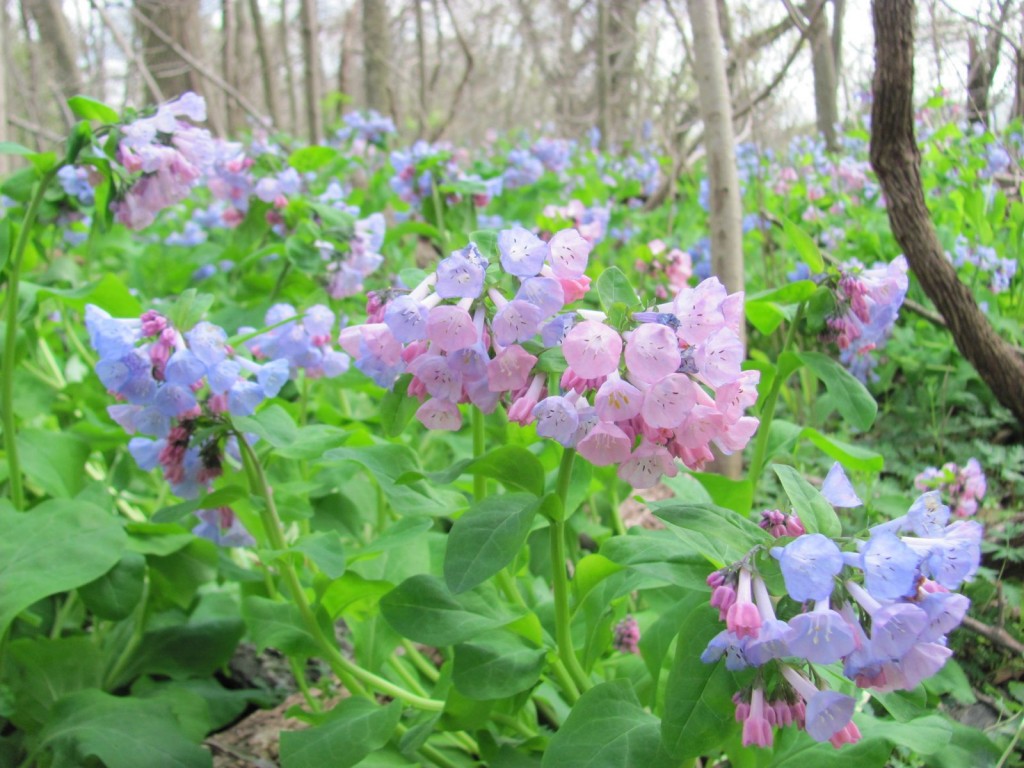
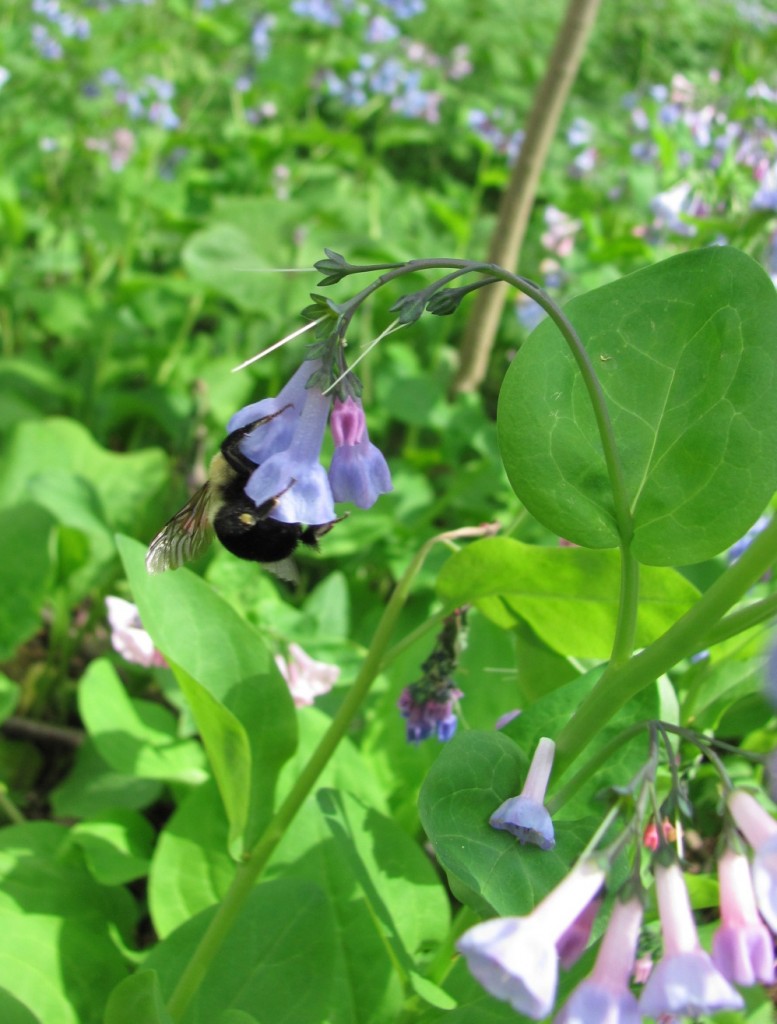
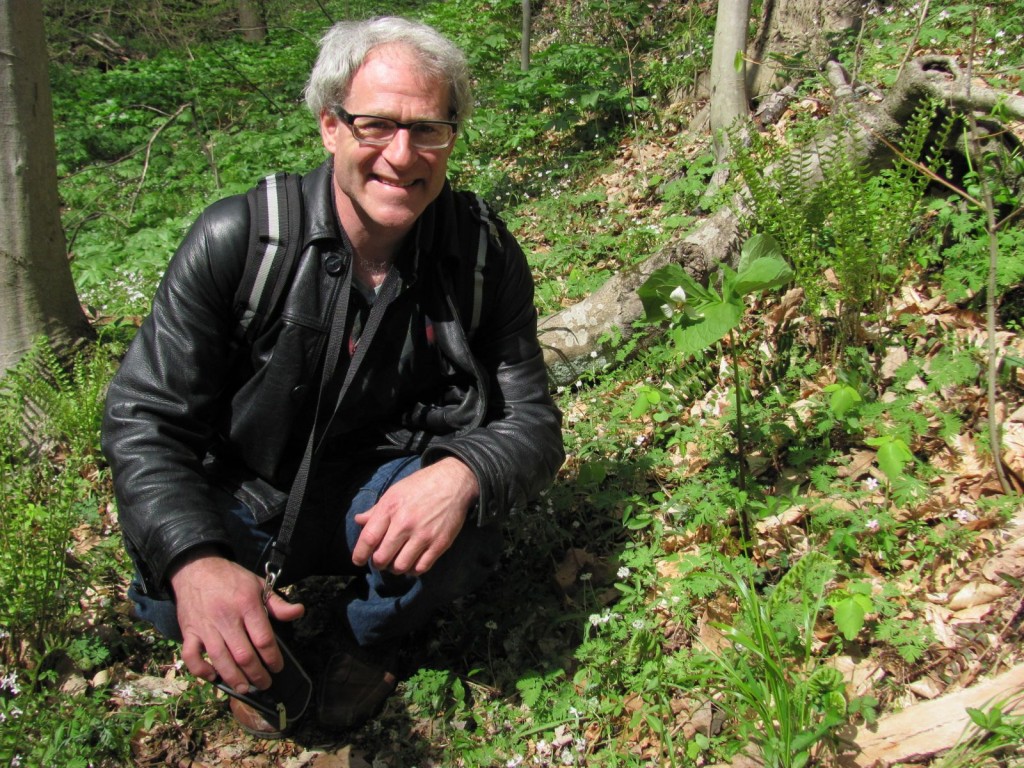
Thank you for the beautiful photographs! Very inspiring!
Lovely lovely lovely. Today walking with Shelly we found many many Mayapples along Childs Road, actually the plants sort of looked like Trillium, I have to go look again.
You will have to show us when we come up to visit. The mayapples we got from your friend are growing nicely in the garden.
Excellent close up views! BTW, I was in a place called Paw Paw, West Virginia years ago. I wonder if it was named for the tree? I always thought it was a peculiar name.
Most likely, Paw paw was named for the tree.